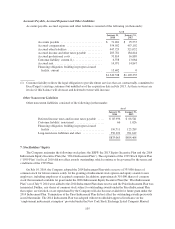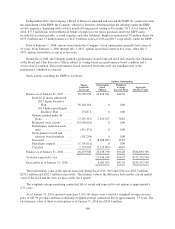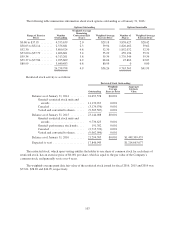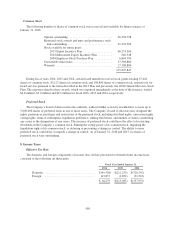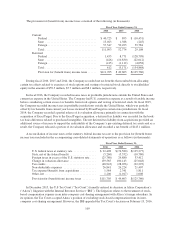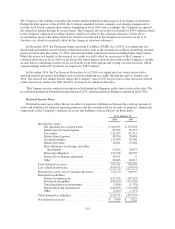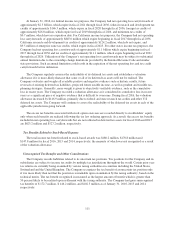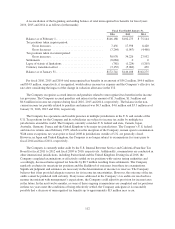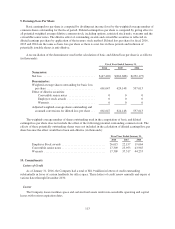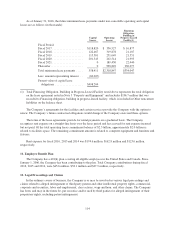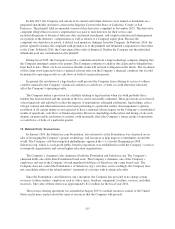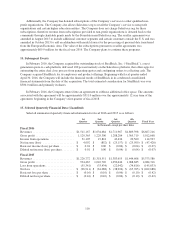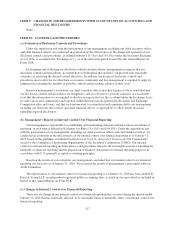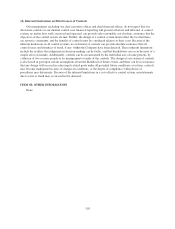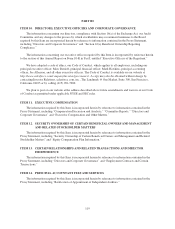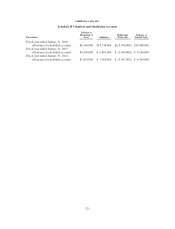Salesforce.com 2016 Annual Report Download - page 122
Download and view the complete annual report
Please find page 122 of the 2016 Salesforce.com annual report below. You can navigate through the pages in the report by either clicking on the pages listed below, or by using the keyword search tool below to find specific information within the annual report.In July 2015, the Company and certain of its current and former directors were named as defendants in a
purported shareholder derivative action in the Superior Court for the State of California, County of San
Francisco. The plaintiff filed an amended version of this derivative complaint in November 2015. The derivative
complaint alleged that excessive compensation was paid to such directors for their service and
included allegations of breach of fiduciary duty and unjust enrichment, and sought restitution and disgorgement
of a portion of the directors’ compensation as well as reform of a Company equity plan. Because the
complaint was derivative in nature, it did not seek monetary damages from the Company. In February 2016, the
parties agreed to dismiss the complaint with prejudice as to the plaintiff and submitted a stipulation to that effect
to the Court. In March 2016, the Court entered the order of dismissal. Neither the Company nor the individual
defendants paid any consideration to the plaintiff.
During fiscal 2015, the Company received a communication from a large technology company alleging that
the Company infringed certain of its patents. The Company continues to analyze this claim and no litigation has
been filed to date. There can be no assurance that this claim will not lead to litigation in the future. The resolution
of this claim is not expected to have a material adverse effect on the Company’s financial condition, but it could
be material to operating results or cash flows or both of a particular quarter.
In general, the resolution of a legal matter could prevent the Company from offering its service to others,
could be material to the Company’s financial condition or cash flows, or both, or could otherwise adversely
affect the Company’s operating results.
The Company makes a provision for a liability relating to legal matters when it is both probable that a
liability has been incurred and the amount of the loss can be reasonably estimated. These provisions are reviewed
at least quarterly and adjusted to reflect the impacts of negotiations, estimated settlements, legal rulings, advice
of legal counsel and other information and events pertaining to a particular matter. In management’s opinion,
resolution of all current matters is not expected to have a material adverse impact on the Company’s consolidated
results of operations, cash flows or financial position. However, depending on the nature and timing of any such
dispute, an unfavorable resolution of a matter could materially affect the Company’s future results of operations
or cash flows, or both, of a particular quarter.
13. Related-Party Transactions
In January 1999, the Salesforce.com Foundation, also referred to as the Foundation, was chartered on an
idea of leveraging the Company’s people, technology, and resources to help improve communities around the
world. The Company calls this integrated philanthropic approach the 1-1-1 model. Beginning in 2008,
Salesforce.org, which is a non-profit public benefit corporation, was established to resell the Company’s services
to nonprofit organizations and certain higher education organizations.
The Company’s chairman is the chairman of both the Foundation and Salesforce.org. The Company’s
chairman holds one of the three Foundation board seats. The Company’s chairman, one of the Company’s
employees and one of the Company’s board members hold three of Salesforce.org’s nine board seats. The
Company does not control the Foundation’s or Salesforce.org’s activities, and accordingly, the Company does
not consolidate either of the related entities’ statement of activities with its financial results.
Since the Foundation’s and Salesforce.org’s inception, the Company has provided at no charge certain
resources to those entities’ employees such as office space, furniture, equipment, facilities, services, and other
resources. The value of these items was approximately $1.2 million for the fiscal year 2016.
The resource sharing agreement was amended in August 2015 to include resources outside of the United
States and is more explicit about the types of resources that the Company will provide.
115


